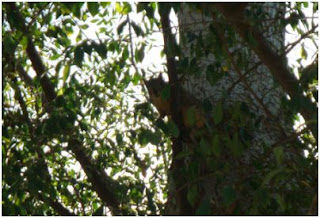I've been giving serious thought to trees lately. Just a little pondering on which tree I'd choose if I had to recommend only one.
Which tree must YOU have and simply could not do without?
What's the most essential tree someone would have to have if they could only have one tree? Also wondered just what I'd do if I could only take one of the thirty-some-odd trees that's currently in my yard with me to some far off land ~ just which one would I take?
Instantly, my thought was to choose one of the lemon trees. Of course a lemon tree! I'm always reaching for a lemon for one reason or another. Either to soothe my throat during cold spells, in the summer for a refreshing dose of lemonade and every day for a little zest in the salad dressing or to make some other memorable dish.
Then I thought about my childhood and recalled how lemons were completely non-essential. I immediately got a sense of betrayal as I wouldn't be who I am today without the fresh taste of a sweet and juicy Washington Navel orange or an intensely flavorful and incredibly petite Satsuma tangerine. How could I ever think of recommending a lemon over a tangerine or that incredibly giving tree that sat practically at my parents back door giving me fruit anytime and every time I desired?
That tree was planted at my birth and seemed to enjoy watching me grow up: providing shade during the summer, a hideaway from friends as we played hide-and-go-seek, giving the most bold flavor of orange juice that would run down my tiny little hands as I'd smash my face into half a circle, savoring every ounce juice. It provided leaves for my art projects and I recall being so enthralled how deep green and shiny the leaves were and the subsequent miracle of fruit it produced. I'd hug the tree and marvel at how I couldn't get my arms around the circumference of it. There was a gentleness about that green giant. The bark seemed cool in the summer and always provided warmth in the winter. My dog would chase me back and forth around that tree and it always seemed to enjoy those youthful trivialities. That was the giving tree.
Our giving orange tree was partners with a Satsuma tangerine that produced the most deliciously perfect petite fruit imaginable. Peeling the fruit was always so much fun as it would produce this effervescence which would instantly roll up my nose and contained an intense fragrance of tangerine - which in case you've never had one - is totally different from that of an orange.
The tangerine tree was actually not part of my parents garden but originated in the garden of a neighbor on a completely different block, in the rear of the yard and was so large it cascaded over a massive fence and a privately enclosed gazebo type of structure which was on my parents property. This tree would produce so many fruit they would fall on the top of the gazebo and then roll off the roof and onto the ground in a lattice enclosed patio. And being the impatient little grub I was, once they started falling, I'd get my father's ladder, prop it against the gazebo, climb the structure and make my way to the end of the roof and have a picking party. I'd pick as many as I could without breaking my neck and without ever figuring out how I was going to get those tangerines off the roof and back to that old ladder. Lord only knows why I never broke a leg as that was not the sturdiest ladder in the world and its rickety structure only barely reached the top of the roof.
I'm making myself dizzy just reliving this.
I would be so overcome with the hunt for obtaining the fruit that I would forget how much I really wasn't much of a climber but the fruit was absolutely worth every bit of risk. Year after year after year. I'd abscond with tangerines and bring them from one part of the yard to the other part and sit and eat those tangerines under the big green giant where it provided comfort and a nice cool bit of shade out of the hot sun.
Yep, I'd have to recommend an orange tree. That was my real life giving tree. What a lucky little girl I was.
I'd really like to know what tree you couldn't do without. Any fond memories or amazing tastes that are absolutely essential when you consider the type of fruit you would consider a must?
Anyone with children? Have you shared the book The Giving Tree? As simple as it is, it's a wonderful, delightful and almost spiritual little book that I not only recommend but purchase for everyone I know who has a child and does not have that book! It's one of those must reads for any child.














































